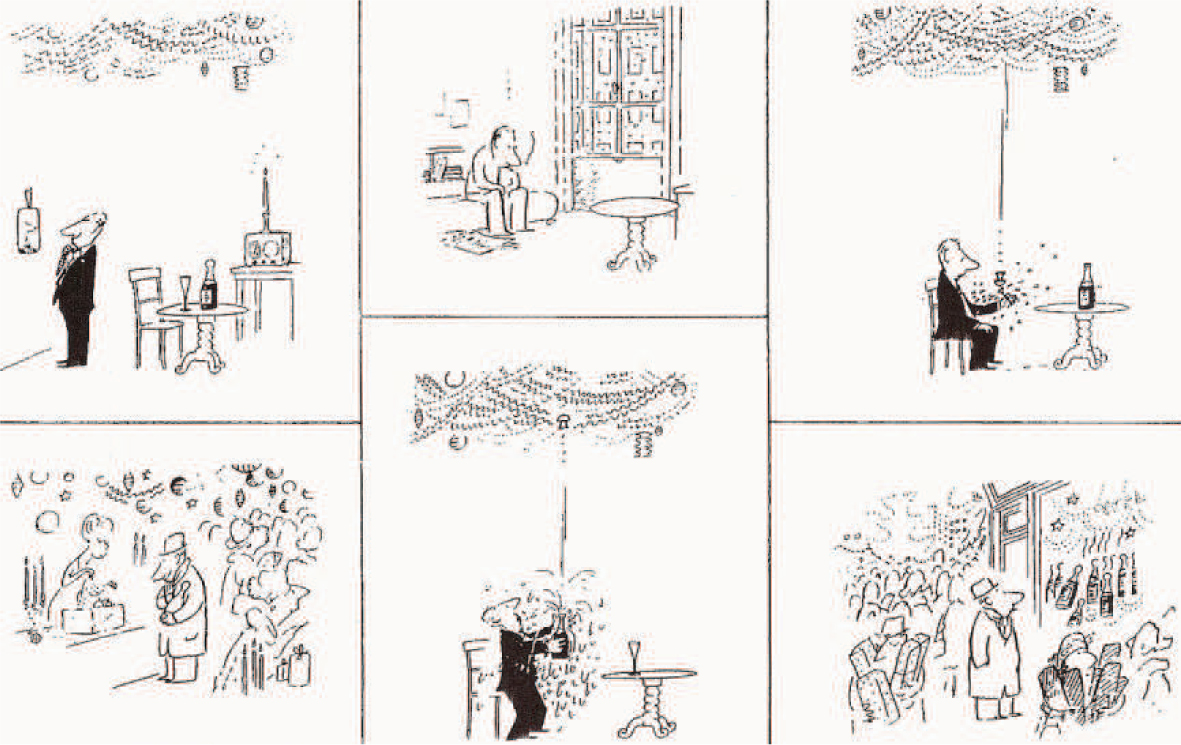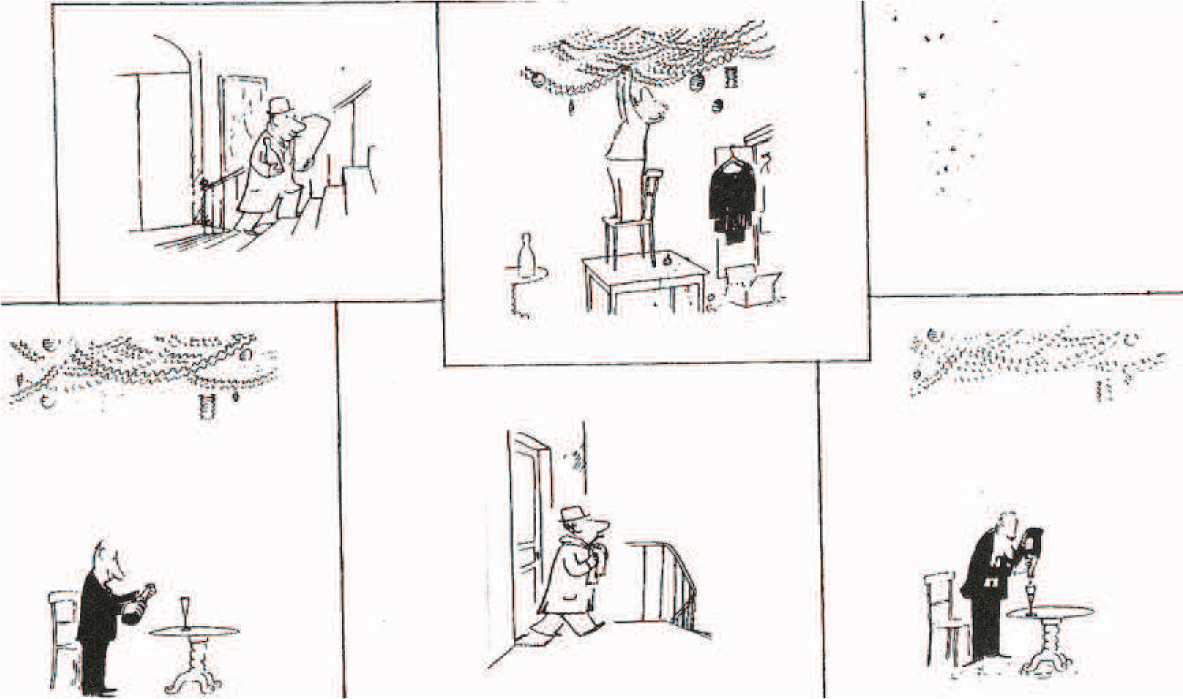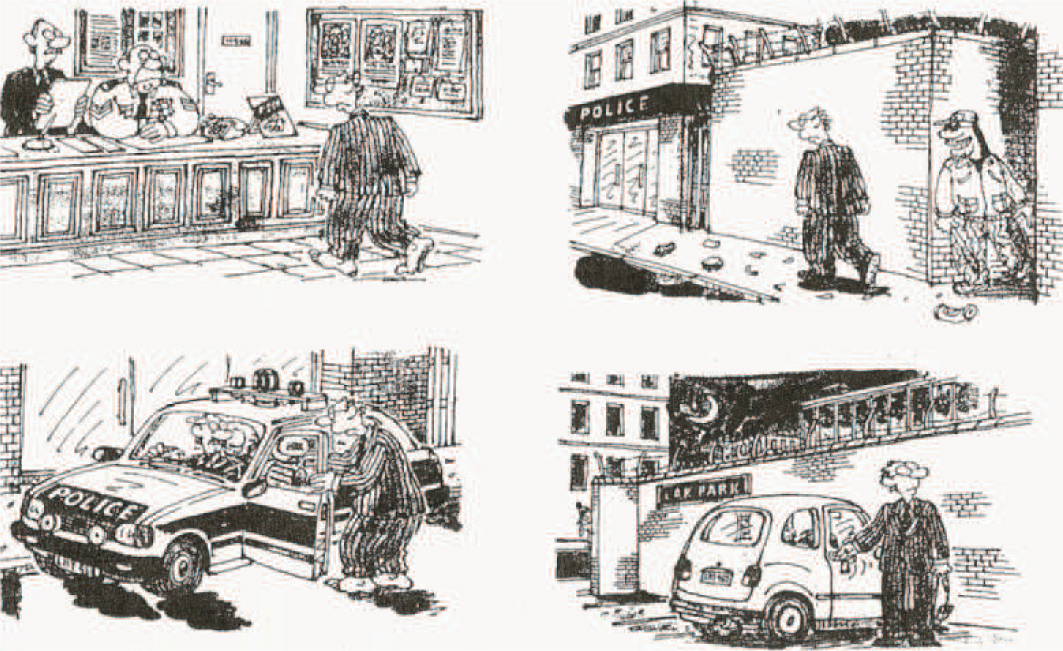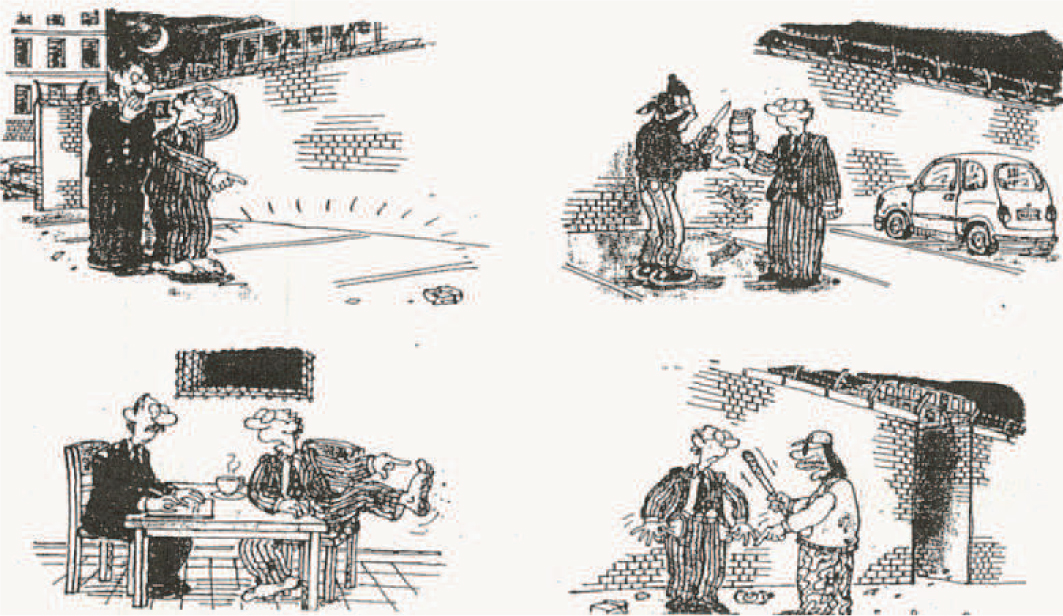Abstract
Despite the vast body of research on communication strategies (CSs) and the way L2 learners manage to get their message across via these mechanisms, there is little research on Spanish as L2 in an interactional context and between different types of dyads. This is why this study attempts to examine a possible relationship between Spanish L2 learners’ use of communication strategies and the type of interactant (learner and native speaker). For this, twenty-four face-to-face interactions of two types of dyads carrying out two tasks were analysed by drawing on Dörnyei and Körmos’ taxonomy (1998) and Dörnyei and Scott’s interactional CSs (1997). The data collection involved video and audio recording, observation of participants’ interactions and stimulated recall methodology. Quantitative and qualitative analyses were conducted to investigate a possible association between CSs and the interlocutor factor. Findings confirm an association between the learners’ CS usage and the type of interlocutor as being more influenced by the speakers’ linguistic background and, consequently, the NS’s role as an L2 expert.
Alcón, E. and J. Guzmán. 1994. “Interlanguage modifications in NS–NNS oral interactions: A study in an English and Catalan learning context”. Revista Española de Linguistica Aplicada 10. 17–26.Search in Google Scholar
Beebe, L. and H. Giles. 1984. “Speech-accomodation theories: A discussion in terms of second-language acquisition”. International Journal of the Sociology of Language 46. 5–32.10.1515/ijsl.1984.46.5Search in Google Scholar
Bialystok, E. 1990. Communication strategies. A psychological analysis of second-language use. Oxford: Basil Blackwell.Search in Google Scholar
Bialystok, E. and M. Frohlich. 1980. “Oral communication strategies for lexical difficulties”. Interlanguage Studies Bulletin 5. 3–30.Search in Google Scholar
Canale, M. and M. Swain. 1980. “Theoretical bases of communicative approaches to second language teaching and testing”. Applied Linguistics 1(1). 1–47.10.1093/applin/1.1.1Search in Google Scholar
Ceo-Difrancesco, D. 2003. “Strategies in the oral production of beginning Spanish learners”. Hispania 86(1). 121–132.10.2307/20062820Search in Google Scholar
Corder, S. 1983. “Strategies of communication”. In: Færch, C. and G. Kasper (eds.), Strategies in interlanguage communication. London: Longman. 15–19.Search in Google Scholar
Dörnyei, Z. and J. Kormos. 1998. “Problem-solving mechanisms in L2 communication”. Studies in Second Language Acquisition 20(3). 349–385.10.1017/S0272263198003039Search in Google Scholar
Dörnyei, Z. and M.L. Scott. 1995. “Communication strategies: An empirical analysis with retrospection”. Paper presented at the 21st Annual Symposium of the Deseret Language and Linguistics Society. 155–168.Search in Google Scholar
Dörnyei, Z. 1995. “On the teachability of communication strategies”. Tesol Quarterly 29(1). 55–85.10.2307/3587805Search in Google Scholar
Dörnyei, Z. and M.L. Scott. 1997. “Review article: Communication strategies in a second language: Definitions and taxonomies”. Language Learning 47(1). 173– 210.10.1111/0023-8333.51997005Search in Google Scholar
Dörnyei, Z. and S. Thurrell. 1991. “Strategic competence and how to teach it”. ELT 45(1). 16–23.10.1093/elt/45.1.16Search in Google Scholar
Ellis, R. 2003. Task-based language learning and teaching. Oxford: Oxford University Press.Search in Google Scholar
Færch, C. and G. Kasper. 1983. “Plans and Strategies in foreign language communication”. In Færch, C. and G. Kasper (eds.), Strategies in interlanguage communication. London: Longman. 20–60.Search in Google Scholar
Faucette, P. 2001. “A pedagogical perspective on communication strategies: Benefits of training and an analysis of English language teaching materials”. Second Language Studies 19(2). 1–40.Search in Google Scholar
Fernández Dobao, A.M. 2001. “Communication strategies in the interlanguage of Galician students of English: The influence of learner-and task-related factors”. Atlantis 23(1). 41–62.Search in Google Scholar
Fernández Dobao, A.M. 2004. “The use of communication strategies by Spanish learners of English. A study of the collaborative creation of meaning, language, and linguistic knowledge”. Universidad de Santiago de Compostela, Spain.Search in Google Scholar
Fernández Dobao, A.M. and I. Palacios Martínez. 2007. “Negotiating meaning in interaction between English and Spanish speakers via communication strategies”. Atlantis 29(1). 87–105.Search in Google Scholar
Fernández Dobao, A.M. 2012. “Collaborative dialogue in learner–learner and learner–native speaker interaction”. Applied Linguistics 33(3). 229–256.10.1093/applin/ams002Search in Google Scholar
Fuji, A. and A. Mackey. 2009. “Interactional feedback in learner–learner interactions in a task-based EFL classroom”. IRAL 47. 267–301.10.1515/iral.2009.012Search in Google Scholar
García Mayo, M. and T. Pica. 2000. “Interaction among proficient learners: Are input, feedback and output needs addressed in a foreign language context?” Studia Linguistica 54(2). 272–279.10.1111/1467-9582.00066Search in Google Scholar
Gass, S. and A. Mackey. 2000. Stimulated recall methodology in second language research. London: Routledge.Search in Google Scholar
Gass, S. and E. Varonis. 1984. “The effect of familiarity on the comprehensibility of nonnative speech”. Language Learning 34(1). 65–89.10.1111/j.1467-1770.1984.tb00996.xSearch in Google Scholar
Ghout-Khenoune, L. 2012. “The effects of task type on learners’ use of communication strategies”. Procedia – Social and Behavioral Sciences 69. 770–779.10.1016/j.sbspro.2012.11.472Search in Google Scholar
Gonzalez Ruiz, C. 2008. “El uso de las estrategias de comunicación oral por estudiantes iniciales de ELE en una universidad de Singapur: ¿Necesidad de entrenamiento? Revista RedELE 9. 1–76.Search in Google Scholar
Haastrup, K and R. Phillipson. 1983. “Achievement strategies in learner/native speaker interaction”. In: Færch C. and G. Kasper (eds.), Strategies in interlanguage communication. London: Longman. 140–158.Search in Google Scholar
Khan, S. 2010. Strategies and spoken production on three oral communication tasks: A study of high and low proficiency EFL learners. (PhD dissertation, Universitat Autónoma de Barcelona.)Search in Google Scholar
Khan, S. and M. Victori. 2011. “Improving method-in-use through classroom observation”. IRAL – International Review of Applied Linguistics in Language Teaching 49. 27–53.10.1515/iral.2011.002Search in Google Scholar
Klippel, F. 1984. Keep talking. Cambridge: Cambridge University Press.Search in Google Scholar
Krashen, S. 1985. The input hypothesis: Issues and implications. California: Laredo Publishing Co Inc.Search in Google Scholar
Lafford, B. 2004. “The effect of the context of learning on the use of communication strategies by learners of Spanish as a second language”. Studies in Second Language Acquisition 26. 201–225.10.1017/S0272263104262039Search in Google Scholar
Lam, W. 2006. “Gauging the effects of ESL oral communication strategy teaching: A multi-method approach”. Electronic Journal of Foreign Language Teaching 3(2). 142–157.Search in Google Scholar
Lam, W. 2010. “Implementing communication strategy instruction in the ESL oral classroom: What do low-proficiency learners tell us?” TESL Canada Journal 27(2). 11–30.10.18806/tesl.v27i2.1056Search in Google Scholar
Liang, W.-F. and M. Llobera. 1996. “Estrategias de comunicación en el interlenguaje del español de los hablantes de chino mandarin”. Paper presented at the VII Congreso Internacional de ASELE, Universidad de Castilla-La Mancha. Almagro: Instituto Cervantes. 291–300.Search in Google Scholar
Lee, L. 2001. “Online interaction: Negotiation of meaning and strategies used among learners of Spanish”. ReCALL 13(2). 232–244.10.1017/S0958344001000829aSearch in Google Scholar
Long, M. 1981. “Input, interaction, and second-language acquisition”. Annals of the New York Academy of Sciences 379. 259–278.10.1111/j.1749-6632.1981.tb42014.xSearch in Google Scholar
Long, M. 1983. “Native speaker/non-native speaker conversation and the negotiation of comprehensible input”. Applied Linguistics 4(2). 126–141.10.1093/applin/4.2.126Search in Google Scholar
Mackey, A. 2007. Conversational interaction in second language acquisition. Oxford: Oxford University Press.Search in Google Scholar
Manchón, R. 2000. “Fostering the autonomous use of communication strategies in the foreign language classroom”. Links and Letters 7. 13–27.Search in Google Scholar
Mesgarshahr, A. and E. Abdollahzadeh. 2014. “The impact of teaching communication strategies on EFL Learners’ willingness to communicate”. Studies in Second Language Learning and Teaching 4(1). 51–76.10.14746/ssllt.2014.4.1.4Search in Google Scholar
Numata, M. 2009. The effects of the use of communication and negotiation strategies on L2 acquisition. (PhD dissertation, University of Iowa, United States.)10.17077/etd.tw88mzoySearch in Google Scholar
O’Donnell, M. 2008. “UAM Corpus Tool”. <http://www.wagsoft.com/CorpusTool>.Search in Google Scholar
Omar, H., E.M. Amin and M. Md Yunus. 2012. “Learners’ use of communication strategies in an online discussion via Facebook”. Procedia – Social and Behavioral Sciences 64. 535–544.10.1016/j.sbspro.2012.11.063Search in Google Scholar
Paribakht, T. 1984. The relationship between the use of communication strategies and aspects of target language proficiencies – A study of ESL students. Québec: International Centre for Research on Bilingualism.Search in Google Scholar
Pica, T. 1988. “Interlanguage adjustments as an outcome of NS–NNS negotiated interaction”. Language Learning 38(1). 45–73.10.1111/j.1467-1770.1988.tb00401.xSearch in Google Scholar
Pica, T. 1994. “Research on negotiation: What does it reveal about second-language learning conditions, processes, and outcomes?” Language Learning 44(3). 493–527.10.1111/j.1467-1770.1994.tb01115.xSearch in Google Scholar
Pica, T, F.L. Porter, D. Paninos and J. Linnell. 1996. “Language learners’ interaction: How does it address the input, output and Feedback needs of L2 learners?” TESOL Quarterly 30(1). 59–84.10.2307/3587607Search in Google Scholar
Poulisse, N. 1987. “Problems and solutions in the classification of compensatory strategies”. Second Language Research 3. 141–153.10.1177/026765838700300204Search in Google Scholar
Poulisse, N. and E. Schils. 1989. “The influence of task- and proficiency-related factors on the use of compensatory strategies: A quantitative analysis”. Language Learning 39. 15–47.10.1111/j.1467-1770.1989.tb00590.xSearch in Google Scholar
Rabab’ah, G. and D. Bulut. 2007. “Compensatory strategies in Arabic as a second language”. Poznań Studies in Contemporary Linguistics 43(2). 83–106.10.2478/v10010-007-0020-5Search in Google Scholar
Rabab’ah, G. and P. Seedhouse. 2004. “Communication strategies and message transmission with Arab learners of English in Jordan”. Annual Review of Education, Communication and Language Sciences 1. <http://research.ncl.ac.uk/ARECLS/vol1_documents/Ghaleb&Seedhouse/Ghaleb&Seedhouse.htm>.Search in Google Scholar
Rubio, F. 2007. “El uso de estrategias comunicativas entre hablantes avanzados de español”. Círculo de Linguística Aplicada a la comunicación 29. 44–62.Search in Google Scholar
Rosas Maldonado, M. 2012. Strategic communication in Spanish as L2: Exploring the effects of proficiency, task and interlocutor. (PhD dissertation, University of Liverpool.)Search in Google Scholar
Safont Jorda, M.P. 2001. “An analysis on the use and selection of communication strategies by Catalan/Castilian learners of English”. Rassegna Italiana Di Linguistica Applicata 1(1). 57–72.Search in Google Scholar
Sato, M. and R. Lyster. 2007. “Modified output of Japanese EFL learners: Variable effects of interlocutor versus feedback types”. In: Mackey, A (ed.), Conversational Interaction in Second Language Acquisition. Oxford: Oxford University Press. 123–142.Search in Google Scholar
Selinker, L. 1972. “Interlanguage”. IRAL 10(3). 209–231.10.1515/iral.1972.10.1-4.209Search in Google Scholar
Shehadeh, A. 1999. “Non-native speakers’ production of modified comprehensible output and second language learning”. Language Learning 49(4). 627–675.10.1111/0023-8333.00104Search in Google Scholar
Smith, D. 2003. “The use of communication strategies in computer-mediated communication”. System 31(1). 29–53.10.1016/S0346-251X(02)00072-6Search in Google Scholar
Tarone, E. 1977. “Conscious communication strategies in interlanguage: A progress report”. TESOL’77: Teaching and Learning English as a Second Language. 194–203.Search in Google Scholar
Tarone, E. 1981. “Some thoughts on the notion of communication strategies”. Tesol Quarterly 15(3). 285–295.10.2307/3586754Search in Google Scholar
Uztosun, M.S. and I.H. Erten. 2014. “The impact of english proficiency on the use of communication strategies: An interaction-based study in Turkish EFL context”. Journal of Language and Linguistic Studies 10(2). 169–182.Search in Google Scholar
Váradi, T. 1973. “Strategies of target language communication: Message adjustment”. Proceedings of the VIth Conference of the Rumanian-English Linguistics Project. Timisoara: IRAL. 59–72.Search in Google Scholar
Varonis, E. and S. Gass. 1985a. “Non-native/non-native conversations: A model for negotiation of meaning”. Applied Linguistics 6(1). 71–90.10.1093/applin/6.1.71Search in Google Scholar
Varonis, E. and S. Gass. 1985b. “Miscommunication in native/nonnative conversation”. Language in Society 14 (3). 327–43.10.1017/S0047404500011295Search in Google Scholar
Wagner, J. and A. Firth. 1997. “Communication strategies at work”. In: Kasper, G. and E. Kellerman (eds.), Communication strategies: Psycholinguistic and sociolinguistic perspectives London: Longman. 323–344.Search in Google Scholar
Yang, D. and F.P. Gai. 2010. “Chinese learners’ communication strategies research: A case study at Shandong Jiaotong University”. Cross-Cultural Communication 6(1). 56–81.Search in Google Scholar
Yule, G. and E. Tarone. 1997. “Investigating communication strategies in L2 reference: Pros and cons”. In: Kasper, G. and E. Kellerman (eds.), Communication strategies: Psycholinguistic and sociolinguistic perspectives. London: Longman. 17–30.Search in Google Scholar
Appendix A. Transcription Key
[ ] square brackets indicate overlapping speech
(word) word in parenthesis indicates that the word was not clearly heard
{ } curly brackets show the researcher’s comments based on the videos
(( )) double parentheses indicate inaudible speech
↑ upwards arrow indicates rising intonation
Wa-ter hyphens in between syllables mean that the word was slowly uttered
(0.2) pauses are shown in seconds and placed in between parentheses
Italics show the English translation of each utterance
bold represent my notation of relevant non-linguistic features, such as ‘laugh’, and gestures
* indicates incorrect sentence
Appendix B
Jigsaw task N°1: Work with your partner: the pictures are in jumbled order. Describe to your partner what is happening and together try to work out the complete story in the correct order (Klippel 1984: 150).

Picture set A

Picture set B
Appendix C
Jigsaw task N°2: Work with your partner: the pictures are in jumbled order. Describe to your partner what is happening and together try to work out the complete story in the correct order (Anonymous, 2010)[3].

Picture set A

Picture set B
© 2017 Faculty of English, Adam Mickiewicz University, Poznań, Poland
Articles in the same Issue
- Frontmatter
- “Affectionate” diminutive expletives from the religious name Jezu(s)! in Polish
- Acquisition of adjectives in a bilingual setting: A developmental profile of Turkish–Danish bilinguals
- Use of communication strategies in an interactional context: The interlocutor influence
- In defense of linguists’ introspections. A view from a generativist’s perspective
Articles in the same Issue
- Frontmatter
- “Affectionate” diminutive expletives from the religious name Jezu(s)! in Polish
- Acquisition of adjectives in a bilingual setting: A developmental profile of Turkish–Danish bilinguals
- Use of communication strategies in an interactional context: The interlocutor influence
- In defense of linguists’ introspections. A view from a generativist’s perspective

